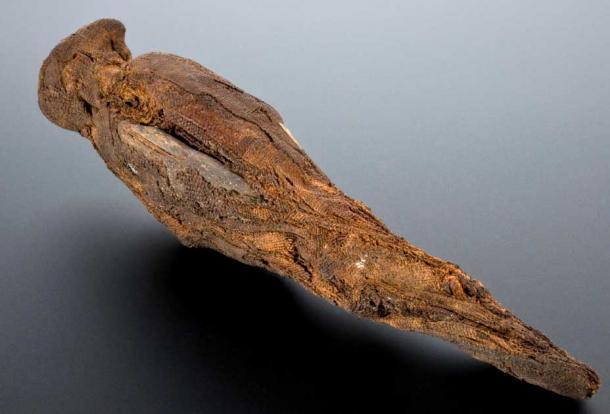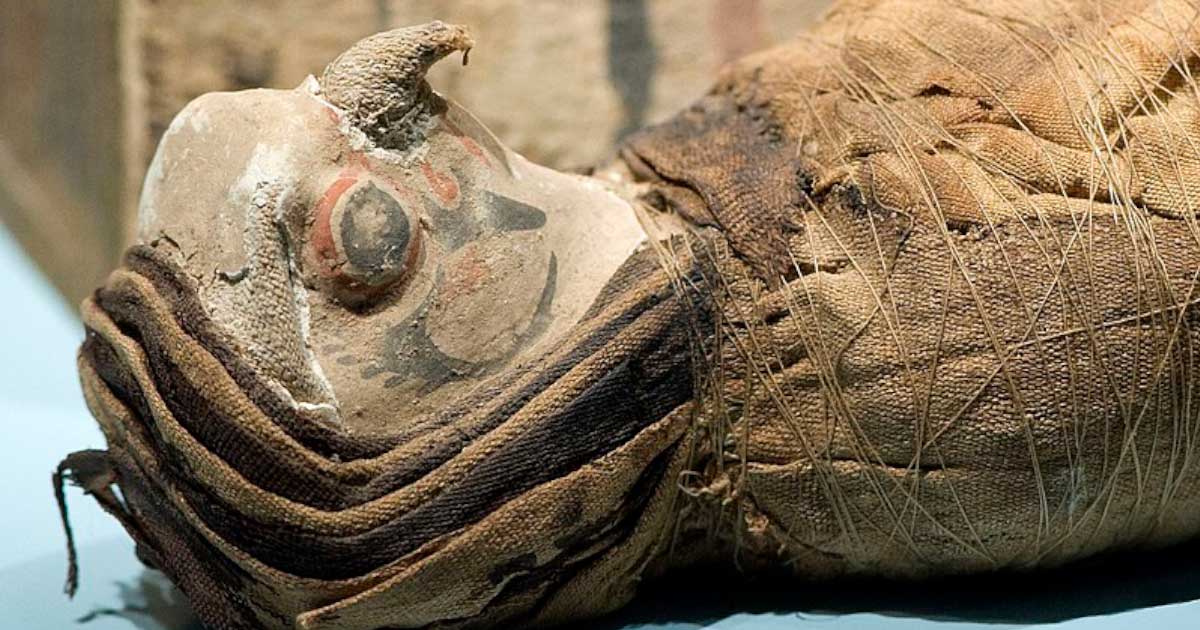Headless Mummified Falcons Found in Egyptian Temple Suggests Ancient Ritual
Archaeologists have discovered an ancient Egyptian temple with 15 mummified falcons, many of them headless and buried around a pedestal. The discovery suggests a previously unknown ritual performed by the Blemmyes, a nomadic people who once inhabited what is now southern Egypt and Sudan.
The team of Spanish and Polish archaeologists just published an extensive analysis of their findings during the 2019 excavation season at Berenike, an ancient and long-abandoned Red Sea port city that borders Egypt’s Eastern desert. These intriguing results, which appear in the American Journal of Archaeology, provide detailed information about the religious shrine or temple unearthed at Berenike that dates back to the fourth to six centuries AD.
While Christianity had become the officially recognized religion in all parts of the Roman Empire by this time, including in Egypt, the shrine found at Berenike was constructed by the nomadic Blemmyes people, who would form their own kingdom in Lower Nubia (southern Egypt and the Sudan) in the late fourth century.
Demonstrating their independent spirit, the Blemmyes remained loyal to ancient religious traditions, preserving a metaphysical belief system that was at odds with post-fourth-century Roman beliefs. The discovery of their temple in Berenike shows they had a strong enough presence in a Roman enclave to practice any type of religion they chose, despite any edicts that may have been issued from the far-off Roman capital.
- 2,000-Year-Old Ancient Egyptian Cemetery Containing Dozens of Pets Unearthed in Berenike
- Blemmyes: The Headless Men of Ancient and Medieval Mythology
Unearthing the Sacred Falcons of the Blemmyes
The American Journal of Archaeology paper describes the efforts of archaeologists under the leadership of Professor Joan Oller Guzmán from the Autonomous University of Barcelona to learn more about the so-called “Falcon Shrine,” a small religious temple that was discovered within a larger group of buildings known as the Northern Complex.
Originally constructed as a traditional Egyptian temple, the shrine was adapted by the Blemmyes to their own belief system sometime during the fourth century. This occurred after the Roman Emperor Constantine had launched his efforts to Christianize all the lands under his authority. But the beliefs of the Blemmyes were entirely their own and did not reflect any Christian inclinations or influences, as the artifacts found in the shrine revealed.
“The material findings are particularly remarkable and include offerings such as harpoons, cube-shaped statues, and a stele with indications related to religious activities,” Professor Oller said in an Autonomous University of Barcelona press release announcing the results of the recent study.
While such finds were remarkable, the most notable discovery was an organized display that featured 15 mummified falcons, most of which were headless. Previous discoveries in the Nile Valley in Egypt had shown that falcons were worshipped in ancient times, and a few individual mummified falcons had been found before. But this is the first time archaeologists had ever discovered a group of preserved falcons buried together inside a temple.
And that wasn’t the end of the surprises. Alongside the mummified birds, archaeologists from the Polish Centre of Mediterranean Archaeology unearthed a collection of unhatched falcon’s eggs. This discovery was truly unprecedented, and highlights how much effort went into constructing this particular religious exhibit.
Adding further intrigue to this amazing find, the stele that was found among the shrine’s artifacts included an unusual inscription, offering the following announcement:
“It is improper to boil a head in here.”
This admonition refers to boiling the heads of the animals found inside the temple, which would have been considered a sacrilegious act.
Taken as a whole, the contents of the temple suggest a syncretic or mixed religious practice.
“All of these elements point to intense ritual activities combining Egyptian traditions with contributions from the Blemmyes, sustained by a theological base possibly related to the worshipping of the god Khonsu [the Egyptian god of the Moon],” Professor Oller concluded. “The discoveries expand our knowledge of these semi-nomad people, the Blemmyes, living in the Eastern desert during the decline of the Roman Empire.”

Example of a falcon mummy (Wellcome Collection / CC by SA 4.0)
The Story of the Blemmyes in the Shadow of the Roman Empire
The 2019 excavations that led to the discovery of the Falcon Shrine were carried out under the auspices of the Sikait Project. Its mission is to complete a comprehensive analysis of the people who lived in a sector of the ancient Egyptian Eastern Desert region known as Mons Smaragdus, which is currently included within the borders of Wadi Gemal National Park.
Mons Smaragdus was the Roman Empire’s only source for highly coveted green emeralds, which were mined at the Sikait site and at other nearby locations. Berenike was located just a day or two away from this emerald mining hotspot, and as the nearest and busiest Red Sea port city Berenike benefited from the vigorous trade that linked Roman-era Egypt with various states and kingdoms in the Mediterranean, Arabia, Africa, and western Asia.
Through the trade of emeralds and other valuable goods, many people who lived in the region accumulated great wealth, and that helped Berenike flourish in the centuries following Rome’s annexation of Egypt in 30 BC.
Berenike was founded in the third century BC by Ptolemy II Philadelphus, the Ptolemaic Egyptian pharaoh who after his death was dubbed Ptolemy the Great. This pharaoh’s father, Ptolemy I, was a Macedonian general who served under Alexander the Great, and after the latter died he founded the Ptolemaic Dynasty that transformed ancient Egypt into a Hellenistic (Greek) kingdom. As a bustling Red Sea port city even in early times, the Hellenistic settlement of Berenike had an obvious attraction to the Romans, and they maintained a strong presence in the city from the time they conquered Egypt in the first century BC up through at least the fourth century BC.
But by the time the Blemmyes came along the power of the Roman Empire was in decline. From the fourth century through the sixth it seems the Blemmyes became a dominant influence in Berenike, breaking from their nomadic traditions to settle in a prosperous trading city.
The excavation of the Falcon Shrine has revealed some fascinating new information about the beliefs and spiritual practices of the Blemmyes culture. Future excavations may very well turn up more ruins and artifacts connected to this mysterious lost people, who disappeared from the written historical record more than 1,000 years ago.
Top image: A mummified falcon found in Egypt (rob Koopman / CC by SA 2.0)
By Nathan Falde




















Comments
More likely, they were preparing a big chicken dinner down in the caverns, when the place was hit and all died. Then came the Ice Age (long nuclear winter), and just now uncovered. Always question their dating!
Nobody gets paid to tell the truth.